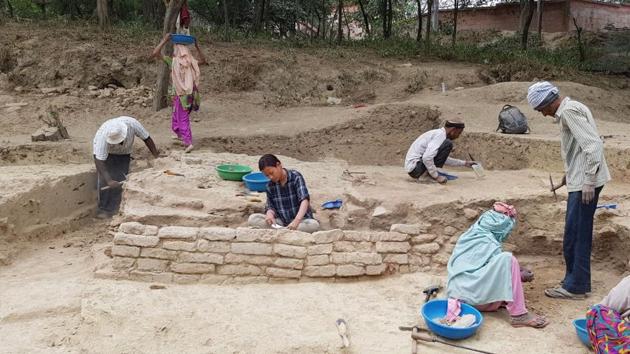Barnava
This is a collection of articles archived for the excellence of their content. |
Archaeology
2018 findings
Jeevan Prakash Sharma, July 20, 2021: The Times of India

From: Jeevan Prakash Sharma, July 20, 2021: The Times of India
The artifacts found bear strong cultural resemblance to those found at sites such as Hastinapur, Indraprastha, Kurukshetra and Mathura, places that find mention in Mahabharata.
Archaeologists excavating a site in an Uttar Pradesh village that has purported connections to a place mentioned in the epic Mahabharata have found artifacts that bear strong cultural resemblance to those found at sites such as Hastinapur, Indraprastha, Kurukshetra and Mathura, places that find mention in the legend.
The Lakshagriha Excavation Project of the Archaeological Survey of India (ASI) is located in Barnava (Varanavat in the epic) village near Meerut in Uttar Pradesh.
According to the Mahabharata, Lakshagriha was a labyrinth-like chamber built of highly flammable lacquer by the Kauravas to burn alive the Pandavas, who foiled the plot and escaped through a tunnel.
After three months of digging at one of the biggest mounds in the village, ASI archaeologists found artifacts such as plates, bowls, large cooking pots and pitchers, but no trace of lacquer — not known to survive for long.
These, said Sanjay Manjul, the head of the excavation project, clearly indicate “that the settlers of the area belonged to the same culture that existed during that time in other places mentioned in Mahabharata”.